Meeting our Main Character
Scritch! Scrabble! Scratch! It was a beautiful summer day and I was quietly reading indoors in a room filled with golden sunshine. Blessed with good hearing and knowing that if I am hearing something odd, I may be in for a surprise. I looked around and walking across a window shade I spied a praying mantis.
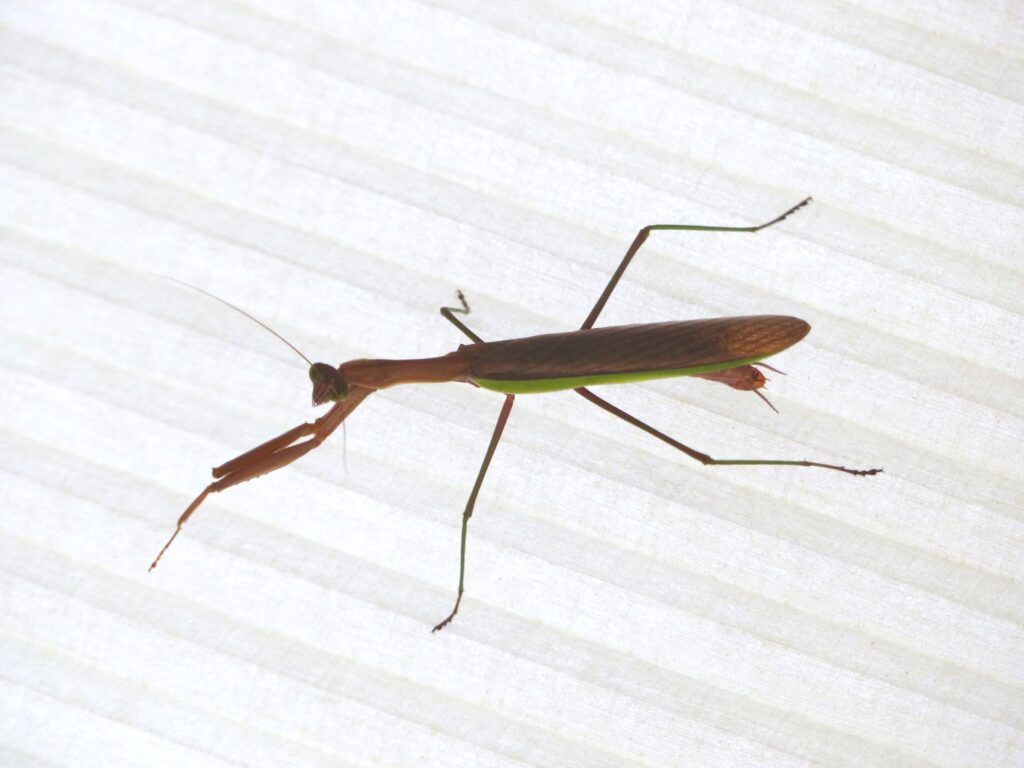
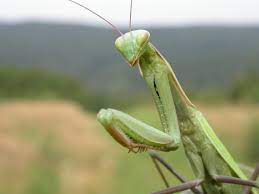
Over the years we have had unexpected visitors from the garden – bees, mice, even a squirrel – but never a praying mantis. I certainly could not leave this six inch creature inside the house. In the past, my method for removing bees was grabbing them with a kitchen towel , followed by releasing them outdoor. Once, though, I was stung through the towel, which considerably cooled my desire to handle bees by hand.
Not having a better idea, however, I used the “towel method” on the praying mantis. Considering that they are renowned as carnivores, I was a bit nervous about handling it in that fashion. I am happy to say that I was not bitten. Plus, further research indicated that while they could theoretically bite a human, it was not only unlikely but of little concern since they are not venomous and do not transmit disease. Most importantly, since they cannot open their jaws widely, such a bite could not inflict much harm in any case.
Urban Legend
As a child I had been told that it was against the law to harm a mantis. The underlying reason supposedly was that as ravenous carnivores, they were useful in keeping down noxious insect populations. According to Snopes, this is a widespread urban legend and absolutely untrue.
Wonderful Opportunity
I have mentioned on more than one occasion that topics frequently just fall into my lap. Several days ago, a friend sent an intriguing photo through WhatsApp. Even with close scrutiny it appeared to be a wonderfully decorated barrette. A little investigative work revealed that it was a flower mantis. Huh!
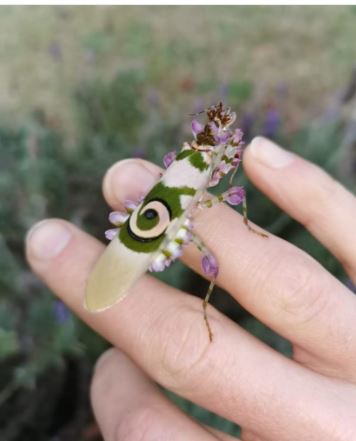

There are approximately 2,400 species of mantises. While they are found primarily in the tropics, clearly they also live and prosper in our own temperate zone.
The name is derived from the Greek where it means prophet probably referring to their appearance with forearms seemingly clasped. They are in the order Mantodea where the word mantis is paired with another Greek word, eidos, meaning form. This name was coined by Hermann Burmeister (1807-1892), a German entomologist and herpetologist.
The oldest mantis fossils come from Siberia and are dated to approximately 135 million years ago. I am always entranced with plant and animal inclusions in amber where science is twinned with beauty. Heritage Auctions sold a one-inch piece of Dominican amber in 2016 for $6,000 that contained a perfect, tiny praying mantis. The amber is fossilized resin of the Hymenaea protera, an extinct tree from the pea family (Fabaceae). A related tree growing in East Africa is the Hymenaea verrucosa whose resins are used to make high-quality varnish.
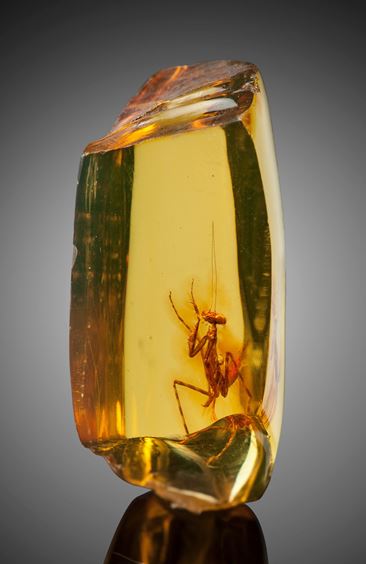
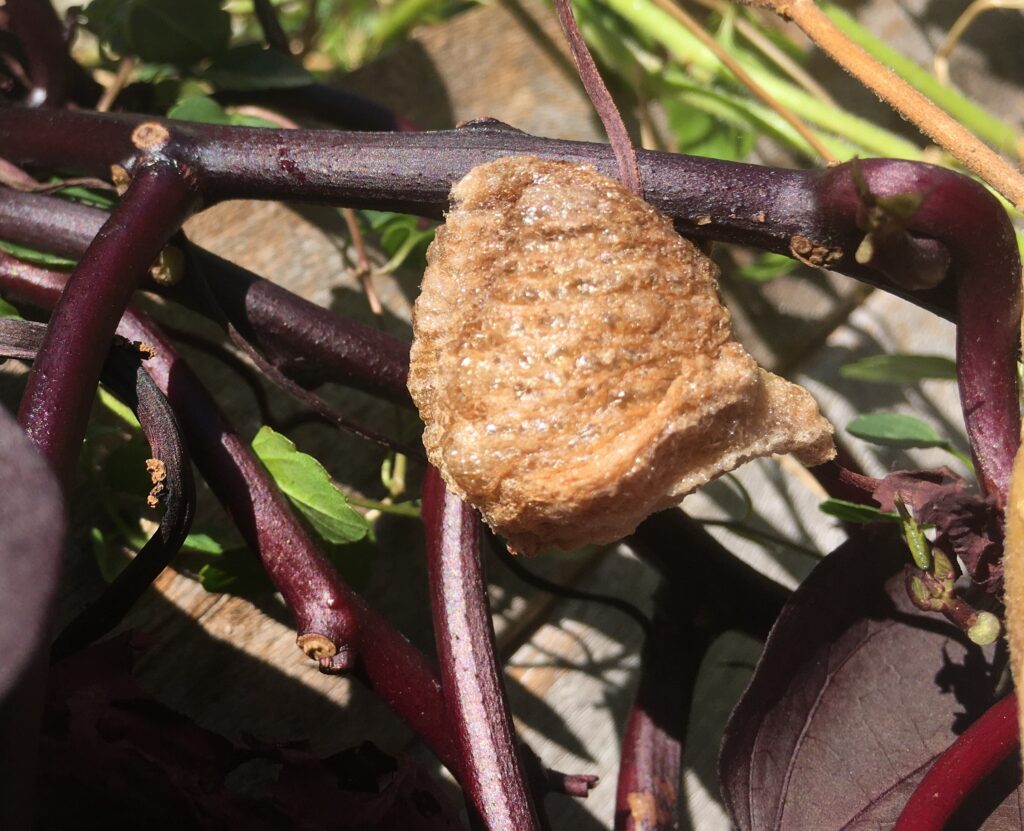

Walking through North Riverdale last summer, I stopped to admire a bed of lavender flowers. The homeowner came over to chat and mentioned that he had a large number of praying mantises living among his plants. He invited me in to see the numerous egg cases attached to the underside of some plants. This type of egg case, which can house between 10 and 400 eggs depending on species, is formed from a froth produced by the female and encloses the eggs. The foam hardens and protects the eggs until weather conditions allow hatching. This type of egg case is called an ootheca, oo from the Greek word for “egg” and theca meaning “cover”, also from the Greek.
Getting to Know your Praying Mantis
Praying mantises have two notable characteristics. Firstly, they are capable carnivores, eating small creatures such as arthropods – those creatures with exoskeletons including spiders and beetles. The larger species will also eat small animals such as lizards, frogs, fish and surprisingly, small birds. The structure of their eyes is such that they primarily detect movement. Then they pounce.
More popularly known is their propensity for sexual cannibalism. Although it occurs in only 13-28 percent of the time and most probably under the duress of hunger, the eating of the male during copulation, beginning with the head, is not an endearing trait for us humans.
Mantises are not pursuit carnivores, chasing down their prey. Instead, they are referred to as ambush predators who utilize stealth, surprising their victims. Many use camouflage, while remaining stationary until their prey is within grasping distance.
This brings us to the various types of camouflage used by mantises and the wonderfully exotic flower mantises.
Exotic Flower Mantises
The Wikipedia entry for flower mantises lists an additional nine with varying types of coloration.
The largest mantis, known as the Giant’s Devil Mantis (Idolomantis diabolica) is found in eastern Africa from the Sudan to Tanzania.
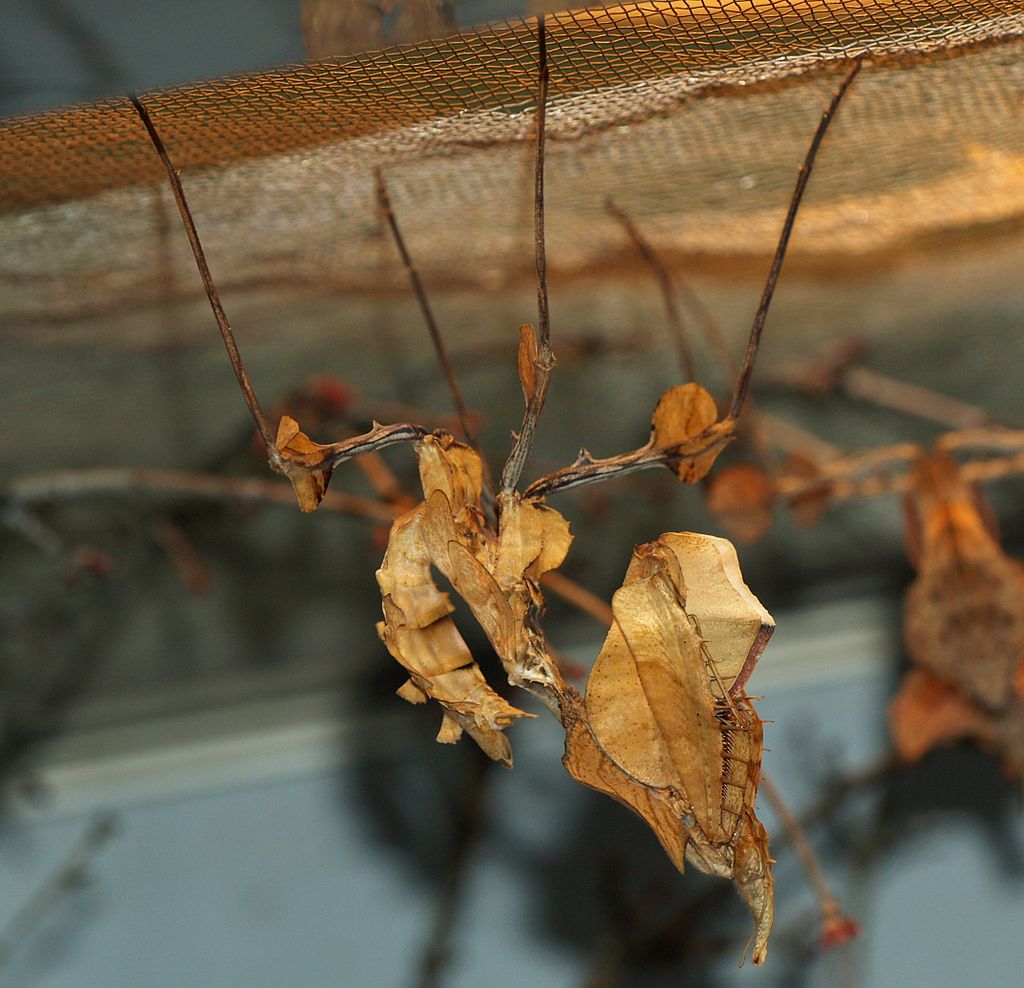

There is the beautiful pink and white orchid mantis Hymenopus coronatus / Hymenopus bicornis.
The magnificent mantis whose picture started this article is a Pseudocreobotra wahlbergi or spiny flower mantis.
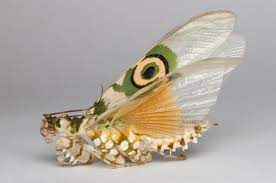
Other Beautiful Species
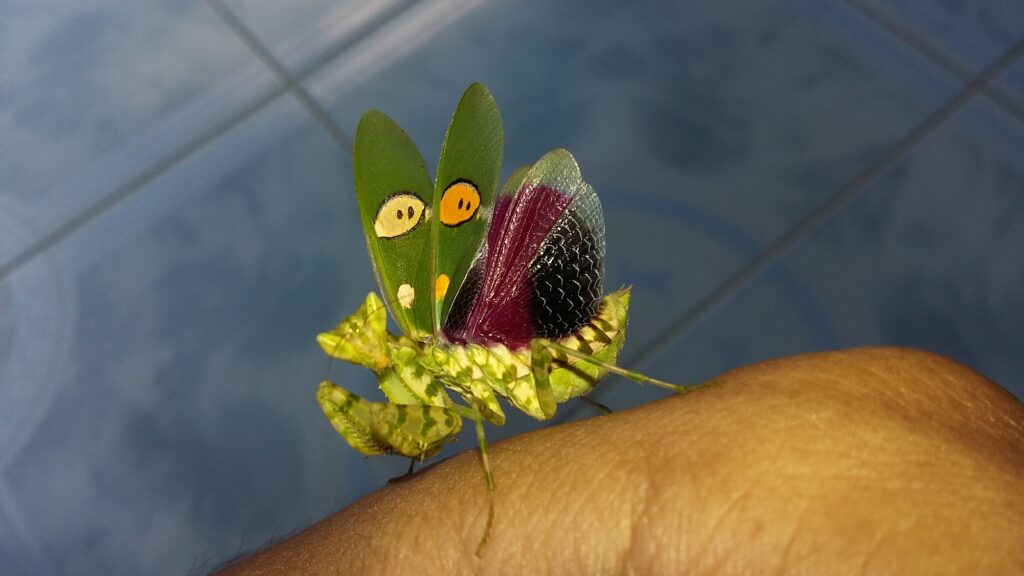
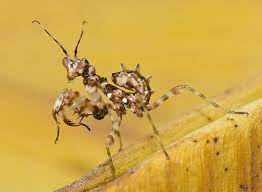
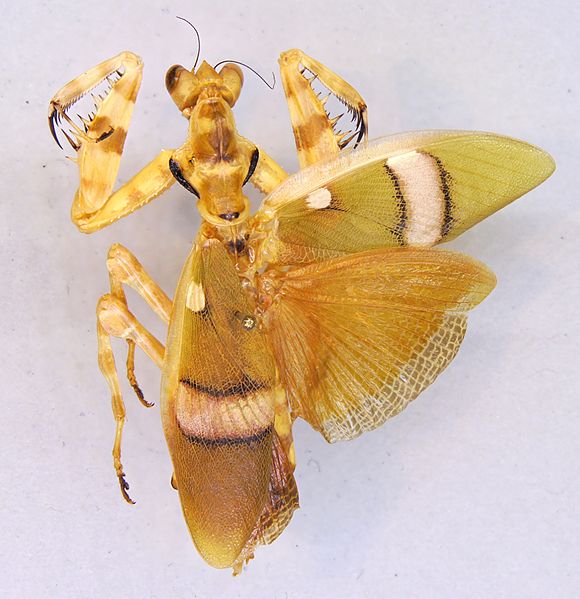
Praying Mantise as Pets
Lastly, praying mantises are also kept as pets. Their lifespan is only about one year and they require live food – crickets, flies or hopper locusts. Apparently they have become widely kept although their eating habits are a off-putting.
All that is beautiful is not necessarily benign.
If you have enjoyed this blog, you may enjoy reading my collection of blogs published as A Habit of Seeing: Journeys in Natural Science.

When I was Animal Room Coordinator at BxHS of Science, we kept a few terraria. I purchased egg masses from Carolina Biological. When they hatched, we fed them fruit flies. The biology labs were always growing Drosophila for their breeding experiments, so there was no food problem for the hatchlings. As they grew older, cannibalism increased, so we separated the larger individuals. A few were eventually released into the school garden. https://www.mantisuniverse.com/ The exotic species are available as pets, but sell out fast.
It is a very interesting insect world out there. Even in Riverdale. Thank you.
So enjoyable! Thank you! Esther
Fascinating!! Was quite surprised to learn of the carnivorous tendencies of the larger species. Out in our parts we’ve got to settle for the green mantis. Still very cool to happen upon, but certainly does not hold a candle to some of the photos you’ve included here!